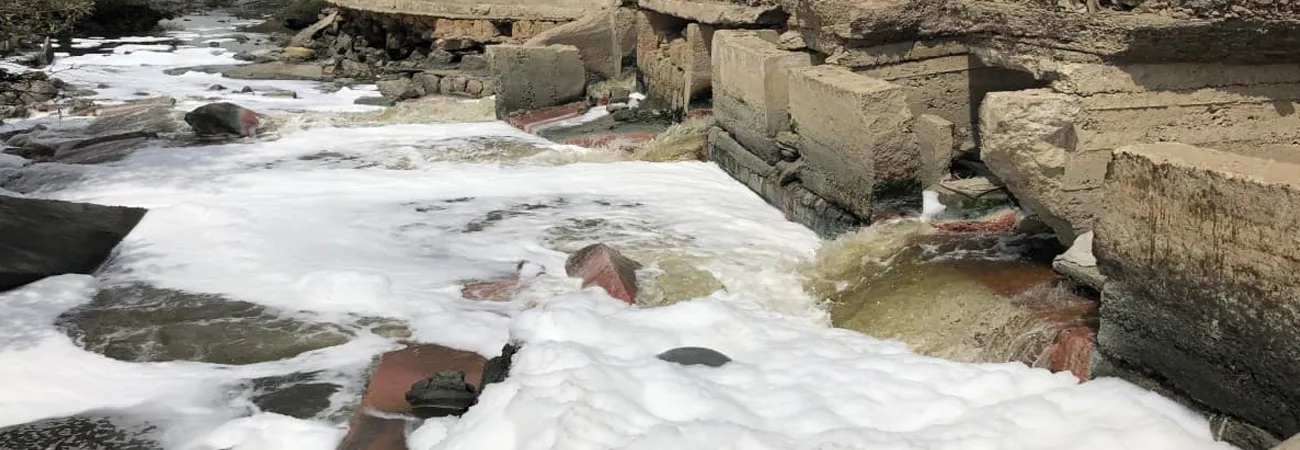i ECONOMY
The textile processing and dyeing units in Faisalabad — employing the traditional methods — are polluting the area’s water table and two major rivers by discharging their untreated effluent into the canals, sewers and storm water drains, reports WealthPK. According to available information, about 3,000 small, medium and large industrial units of different nature are working in the district. Of them, the textile processing and dyeing units are mainly responsible for polluting the environment and water table, as they are still using the traditional methods rather than adopting the modern techniques.
Some big units operating in Khurrianwala industrial area have installed water treatment plants, while a big number of them are discharging their toxic effluent into a drain without treatment. No official data is available on how many units have installed the waste water treatment plants. Two major drains — Paharang and Madhuana — are receiving the untreated effluent and they are also polluting the Ravi and Chenab rivers. The toxic Paharang drain water is polluting the Chenab River and Madhuana drain is contaminating the Ravi River.
The inefficiency of government departments concerned lets these textile units to risk the lives of people. The untreated water poses a direct threat to the lives of hundreds of thousands of people as well as animals. The residents of Faisalabad are already exposed to the air pollution, soil pollution, thermal pollution and noise pollution, and the pollution of water table poses a major threat to their lives. Talking to WealthPK, Dr Muhammad Irfan, secretary of the Faisalabad chapter of the Pakistan Medical Association and assistant professor of medicine at the Allied Hospital, said cases of hepatitis are increasing in Faisalabad due to the industrial pollution. It won’t be wrong if we say that Faisalabad is the red zone because of prevalence of hepatitis, he added.
“A liver centre is working at the Allied Hospital but it has few beds for the patients. We have to make strenuous efforts to get to grips with the menace of industrial pollution; otherwise, the situation will worsen,” he warned. Dr Irfan said the majority of residents of Mamu Kanjan, a locality near the Ravi River, was exposed to hepatitis and other water-borne diseases due to the discharge of toxic water into the Madhuana drain that flowed close to the area.
“We have observed that environmental pollution has exposed the people to hepatitis, typhoid, cancer, lung infections and other ailments,” he said. Talking to WealthPK, Ghafoor Ahmed, owner of a factory on Jaranwala Road, said owing to gas shortage, the millers had to adopt alternative methods to energize their machinery. He said nowadays clothes, shoes, corn cobs and other materials are being used to fire up the machinery, which ultimately pollute the environment.
He said energizing the machinery through alternative sources is like a double-edged sword for the factory owners because neither the government is ready to provide them with the natural gas nor is it sealing their units on the charges of spreading pollution. “We want to run our businesses to strengthen our national economy and provide jobs to but it has become difficult for us to work,” he said.
An anonymous industrialist said they tried to persuade the past governments to install water treatment plants in the industrial areas, but nothing was done, putting the people at risk of environmental hazards.He said the industry is paying huge taxes and it is the government’s responsibility to protect both the industry and the public but it seemed those at the helm are not willing to do any practical work. An anonymous EPA officer told WealthPK that the Agency could not enforce its rules because of the millers’ powerful allies. He denied that the Agency was ineffective and blamed political pressure for hindering their work.
Credit: Independent News Pakistan (INP)









